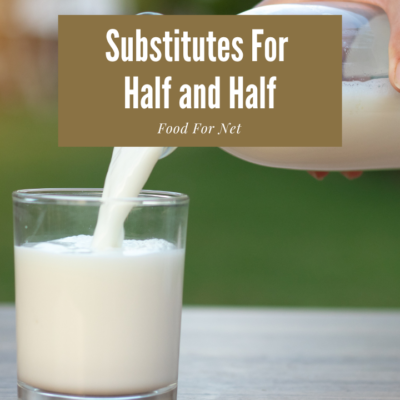
Milk was once seen as a nutritious food, an almost essential part of daily life that provides us with many important nutrients and helps our bones to grow strong. These days, milk seems to be constantly at the center of one controversy or another. At the center of it? Whole milk. So it whole milk good for you?
Well, milk in any form offers nutrients and could improve health in plenty of ways. Yet, there are also concerns milk increasing the risk of inflammation and heart disease. Then there are the ethical debates about the dairy industry itself. It’s not surprising, then, that so many people ask: Is milk bad for you?
We’ve talked about the pros and cons of milk itself elsewhere, along with the many milk substitutes. Today, we’re interested in one part of the conversation – is whole milk good for you?
Many of us have been drinking low fat milk for most of our lives. Doing so sprung from the low fat movement, where we were told time and time again to avoid fat whenever possible. These days, we know that fat isn’t all bad at all. It can even provide benefits in the right situations.
This change in views about fat could mean that whole milk is good for you. Is that the case, though?
P.S. Milk can be frozen, which is fantastic if you purchase too much and need to store some.
Is Whole Milk Good For You?
- Whole Milk Versus Low Fat Milk
- Benefits Of Whole Milk
- Risks Of Whole Milk
- Which Is Better, Whole Or Low Fat Milk?
- Is Milk Bad For You?
- What About Lactose Intolerance?
- Final Thoughts
Whole Milk Versus Fat Free Milk

Milk comes in various types, including whole milk, reduced fat milk, low fat milk, and fat free milk. You may also see 1% and 2% fat milk, which simply different labels used for low fat milk. There are differences between each of these types of milk, but for the moment, let’s focus on whole milk and fat free milk, as these are the furthers from each other in terms of fat content.
For fat free milk, the nutritional profile looks something like this (for a cup):
- 90 calories
- Fat: 0 grams
- Carbs: 13 grams
- Sugars: 12 grams
- Protein: 8 grams
For whole milk, the same serving size gives you this nutritional profile:
- 150 calories
- Fat: 8 grams
- Carbs: 12 grams
- Sugars: 11 grams
- Protein: 8 grams
The vitamins and minerals are roughly the same, as the fat portion of the milk isn’t a major source of nutrients.
So far, it’s easy to see why low fat milk has been promoted so heavily. If protein, carbs, and sugar are almost identical across all types of milk, why would you choose the higher fat version?
These days, however, the assumptions about whole milk are starting to be questioned and researchers are finding some surprising results. It turns out that the fat in the milk might actually be helpful and certainly isn’t as harmful as we’ve long assumed.
Benefits Of Whole Milk

Might Help With Weight Loss
You’d expect full fat milk to lead to weight gain, as it contains more calories than low fat milk. Yet, this might not be the case at all. Studies are starting to show that choosing full fat dairy over low fat may actually decrease the risk of obesity.
It’s not entirely clear why this happens, but one theory suggests that the fat in the milk helps to keep you satisfied, reducing the amount you eat at other times in the day. The fatty acids in the milk might be relevant as well.
Plus, full fat milk often feels like a treat. It can help to displace the sense that you’re restricting yourself, which might then decrease the risk that you’ll make poor food decisions.
Whatever the reason, whole milk really could help with your waistline.
Could Decrease Heart Disease Risk
Whole milk contains saturated fat, which is thought to raise heart disease risk by increasing cholesterol levels. This makes it sound like a bad idea.
Yet, research is starting to question this assumption too. Increasing your dairy fat consumption may have no effect on your heart disease risk and could even decrease it in some situations.
It’s Delicious
The fat in whole milk gives it more richness and creaminess than other types of milk. In fact, many people prefer the flavor and texture of whole milk, even if they feel like they should be drinking low fat milk instead.
The flavor and texture do matter. You’re much more likely to eat healthily when you enjoy your food, rather than trying to force it down.
Risks Of Whole Milk

The Calorie Content
The fat in whole milk increases the calorie content dramatically. Suddenly you’re looking at around 150 calories per glass, compared to just 90 calories for fat free milk or 110 calories for 1% milk.
This calorie difference can easily add up, especially if you’re using milk in your cooking or are making smoothies with it.
The Saturated Fat
As we discussed earlier, the saturated fat in dairy mightn’t be as bad as it first seems. Still, that’s not the same as saying that saturated fat is healthy. You’re still likely to see benefits by keeping saturated fat intake low and focusing on healthier fats, like the monounsaturated fats found in olive oil and avocados.
Fat could be an issue if you need to follow a low fat diet as well. If this is the case, whole milk might be a poor choice, unless you’re sticking to very small servings.
Which Is Better, Whole Or Low Fat Milk?
Whole fat milk clearly isn’t as bad as we’re often told, but which type is the best for health?
For most people, low fat options may still be the better choice. These products have fewer calories and less fat, which is important in many situations.
Whole milk could be helpful if you’re trying to lose weight, but only if you can fit the extra calories into your diet. Remember too that this weight loss effect won’t apply to everyone. It may only be significant if whole milk helps you to decrease your calorie intake elsewhere. If it doesn’t, then the milk is simply providing extra calories that you don’t need.
Think about how you’re using the milk too.
For example, having whole milk in your coffee mightn’t be a big deal. The milk may make you feel a bit more satisfied and make your coffee taste much better.
Using whole milk in a smoothie is an entirely different story, as the extra calories would add up fast. Be careful with this one, as smoothies can easily be higher in calories than you want. It might be better to turn to a low fat alternative, like almond milk, instead.
Is Milk Bad For You?

So far, we’ve been comparing whole milk to low fat milk, but that’s just part of the equation. There’s another important question too – should you be drinking milk at all?
How Milk Could Be Healthy
Let’s start with the positive features, as milk certainly has them.
First of all, milk is a decent source of nutrients, offering calcium, potassium, vitamin B12, vitamin A, and many more. These nutrients all help your body to grow and function well.
While milk isn’t going to fix any nutrient deficiencies overnight, it is an easy way to increase your nutrient intake. This is especially true for kids, as most will drink milk without a fight. Getting them to eat their veggies, on the other hand, can be much more difficult.
Milk also contains around 8 grams of protein in an 8-ounce glass. It’s considered a complete source of protein, as milk gives you all the essential amino acids that your body needs.
The nutrients and protein could help in a variety of ways, like making it easier to avoid deficiencies, keeping your bones strong, promoting muscle growth, and even improving dental health.
How Milk Could Be Harmful
Milk is often linked to problems too. Some studies suggest that it might increase the risk of fractures and even make death more likely.
There are also concerns that milk increases inflammation, an effect that could then lead to higher disease risk and other health problems. Whether this is the case or not is still being investigated. Right now, some research does support an inflammation-related effect, but other studies suggest that dairy might decrease inflammation instead.
There may be an individual-specific effect as well. For example, people who are lactose intolerant might be more likely to experience inflammation from dairy, while those who aren’t might not see the same effect.
Regardless, the potential for increased inflammation could be a reason to avoid milk. There are plenty of plant-based alternatives that you can use in the same way as milk, ones that may be less likely to cause inflammation.
Should You Drink Milk?
Milk isn’t essential at all. It’s a convenient and delicious source of nutrients, true, but you can get those same nutrients in many other places. Whether you drink milk or not comes down to what you personally think about the benefits versus risks.
Right now, it’s clear that many people who drink milk are healthy, they do well physically and mentally, and their risk of disease doesn’t seem to have increased. Many people who avoid milk and drink plant-based alternatives instead are doing just as well.
It often helps to just pay attention to your body for a while. How does whole milk make you feel? Do you feel good afterward or bloated? Do you feel energized or lethargic? What happens if you swap to low fat milk? What about plant-based milk? What changes? What stays the same?
Paying attention to your body like this is powerful.
After all, we’re individuals, every last one of us, and our bodies respond differently. There’s only so much we can learn from science and academic research. The rest needs to come from our own personal experience.
What About Lactose Intolerance?

Lactose intolerance is a common reason for avoiding milk entirely. When you’re lactose intolerant, your body can’t digest the lactose found in milk and other dairy products. If you eat dairy anyway, the lactose passes undigested into your colon, where it ferments, leading to uncomfortable side effects like diarrhea and gas.
Lactose intolerance isn’t uncommon. Millions of Americans suffer from it to some degree or another.
Thankfully, consuming lactose when you’re intolerant isn’t dangerous. You mightn’t need even need to cut lactose out of your diet entirely. Many people do fine by decreasing their lactose intake and focusing on low lactose dairy foods.
There’s another option too. Rather than avoiding milk, you could look for lactose free milk instead. This is regular milk that’s been acted upon by the lactase enzyme. This enzyme breaks down the lactose in the milk, so that your body doesn’t need to.
As such, lactose free milk still gives you all the features of regular milk, just without the lactose.
Final Thoughts
Whole milk clearly isn’t as bad as we once thought. It may even help to lower your heart disease risk and promote weight loss, patterns that mightn’t be what you expected at all. Milk itself comes with some benefits too.
That said, there are some clear issues to pay attention to, including the calorie content and amount of fat in whole milk.
The balance of pros and cons suggests that whole milk can be helpful, but it’s still not as powerful as fruits, vegetables, legumes, and whole grains for your health. In the end, it’s up to you whether you drink whole milk, low fat milk, or plant-based milk. Each type has its own set of benefits and can be healthy.
Just make sure the rest of your diet supports whatever choice you make.
For example, most plant-based milks are fairly low in protein and nutrients, so you’ll need to make this discrepancy up elsewhere in your diet. Whole milk contains plenty of nutrients, but is high in calories. If you drink it regularly, you might need to cut down your calorie intake elsewhere.
Frequently Asked Questions
Does Milk Help Acid Reflux?
Low fat milk may offer fast relief from acid reflux symptoms, soothing your throat and acting like a buffer from the acid in your stomach. What’s more, the calcium and protein in your milk could help with your symptoms as well.
However, the effect is weaker for whole milk. The fat in your milk might even make acid reflux symptoms worse. Because of this, you may need to experiment. See whether milk has good effects on your symptoms or whether it’s harmful instead.
Is Milk Keto?
Keto dieters often skip dairy milk entirely (even whole dairy milk) and focus on half and half, cream, or plant-based milks instead. This is because milk contains more carbs than is ideal.
You could still consume small servings of whole milk on keto if you were careful. However, other options tend to work better and give you more remaining carbs for other uses.
What Percent Is Whole Milk?
Whole milk generally contains 3.25% milk fat. This makes it much higher in fat than reduced fat milk (2%) and low fat milk (1%). That said, there’s room for variation. Some full fat versions are much higher in fat, potentially getting all the way up to 18%.
Is Vitamin D Milk Whole Milk?
Vitamin D milk is simply dairy milk that’s been fortified with vitamin D. Most whole milk products have been fortified in this way.
However, skim milk and reduced-fat milks can be fortified with vitamin D as well. This means that while vitamin D milk is often whole milk, there is the occasional exception.
While fortified low fat milk is much less common than fortified whole milk, it’s still important to check the ingredients label so you know exactly what you’re getting.
Is Milk Good For Your Bones?
Milk has long been associated with bone health – largely due to clever marketing. Still, there is some merit to the claim, as milk does contain important nutrients that help with bone health, including calcium, potassium, and vitamin K2.
That said, there isn’t as much evidence for this effect as you might expect. Some studies have even failed to find a link between milk consumption and reduced risk of fractures. Plus, any bone health effect is just linked to the nutrients in milk – and you can get the same nutrients from plenty of other sources.











 Is Trail Mix Good For You?
Is Trail Mix Good For You?
Leave a Reply